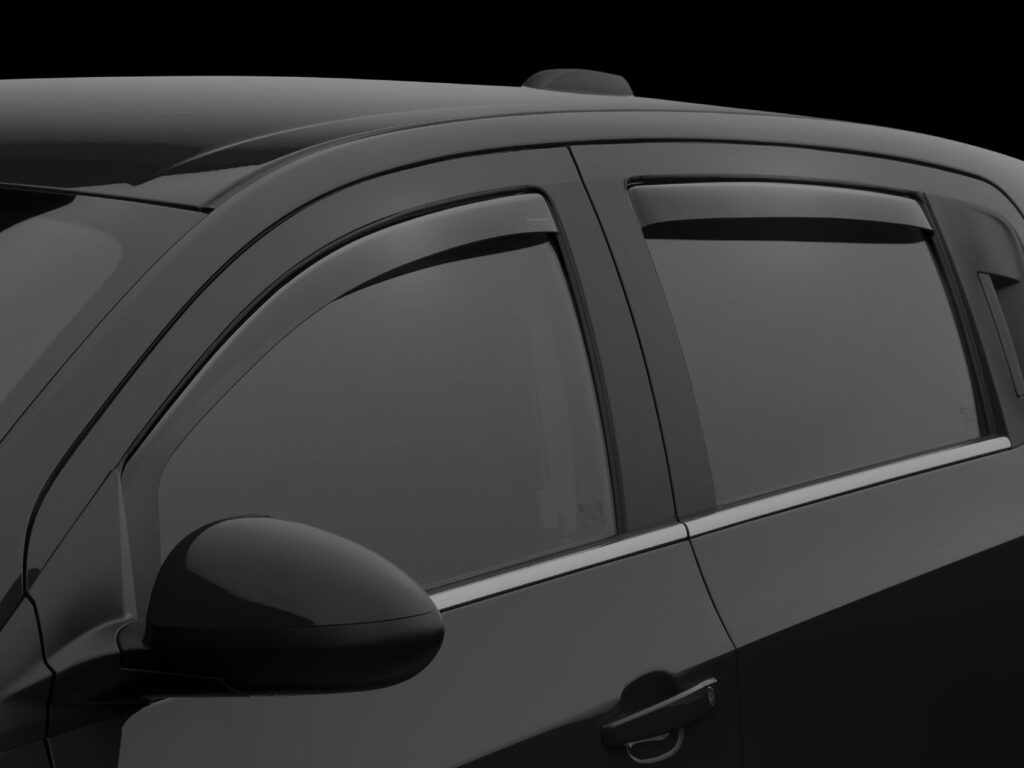Car window tinting can be a highly beneficial decision for various reasons. Not only do they enhance the visual appeal of your car, but they also play a significant role in improving your privacy while on the road. More importantly, window tints are instrumental in controlling the internal temperature of your vehicle. This can be particularly useful in reducing the energy consumption required to cool your car during the intense heat of summer days. Anyone looking at car window tints is all too familiar with secretive “limo tints” that block anyone’s curious eyes from seeing who’s in the vehicle. So it’s not surprising that many wonder what the darkest tint is available for car windows.
While there might be a temptation to opt for very dark tints, it’s essential to be aware of and adhere to the legal regulations concerning tint levels and consider practical implications.
Why Is There A Tint Darkness Limit
While seeking maximum privacy through the darkest window tints is understandable, it’s essential to consider the potential safety hazards of overly dark tints. Too dark windows can significantly impair your ability to see clearly while driving, which could lead to dangerous situations.
From a legal standpoint, regulating window tint darkness is also a security matter. For instance, consider the scenario of a police officer needing to approach your vehicle. It is essential for them to be able to see the driver and the car’s interior for safety checks. Therefore, the laws are designed to ensure an appropriate balance between privacy and safety by focusing on your car’s windows’ light transmittance and reflective properties.
Navigating The Complexities of Tint Laws
The regulations surrounding window tints vary significantly from state to state. Some states, for example, may stipulate a minimum visible light transmission (VLT) level of 70%, which means that vehicles must allow at least 70% of light to pass through their windows. Failing to meet this standard would result in being non-compliant with state laws. However, it’s worth noting that the stringency of these laws can vary, often depending on the typical weather conditions of the state.
Take Alaska and Florida as contrasting examples. Alaska’s generally poor road visibility conditions result in a higher required VLT than Florida, where the abundance of sunlight reduces the risks associated with using darker tints.
For those of us in Massachusetts, the legal limit is 35% VLT, with trucks and SUVs allowed to have 20% on some of their windows.
Which Window, Matters
When considering window tint darkness, it’s important to recognize that the regulations can differ based on the specific location of the windows on your vehicle.
As mentioned, Massachusetts sets different acceptable limits for how dark a tint can be on a window. Cars are limited to 35% tints across all their windows, minus the windshield. Trucks and SUVs follow the same limitations for their front windows but are allowed darker tints on the rear side and rear windows, down to 25%.
For windshields, the majority of state laws demand minimal or no tint. Additionally, some states have specific regulations regarding the number and placement of stickers and decals on a windshield. When finding the darkest tint, you can be sure you won’t be allowed to apply it to your windshield, regardless of how light or dark it is.
Exceptions For Medical Reasons
Window tint laws do provide exemptions, particularly for individuals with certain medical conditions that may be aggravated by excessive sun exposure. For those searching for the darkest tints, having a medical exemption will be one of the limited ways to have a tint darker than the legal limit. Different states recognize various medical conditions for these exemptions. Some of these conditions include:
- Melanoma
- Systemic lupus erythematosus
- Bloom syndrome
- Lichen planus actinus
- Actinic folliculitis, psoriasis
- Dermatomyositis, pellagra
- Solar urticaria
If you qualify for an exemption under these laws, always carrying the appropriate documentation in your vehicle is important. This documentation should include a licensed medical professional diagnosis detailing the specific UV exposure requirements related to your medical condition and the duration for which you should limit your exposure to sunlight. It should also specify the particular vehicle to which the tint exemption applies.
What’s The Darkest Tint Available?
The darkest tint available is 5%, allowing only 5% of light to get through. As window tint levels are sold in increments of five, it’s impossible to go lower than 5% as the next stop would be 0%, a window that stops all light and doesn’t let you see anything.
A 5% tint is excellent for the privacy conscious, widely known as “limo tint.” It is, however, illegal in every state without a permit. Driving in low visibility or at night with these tints can be hazardous due to the limited visibility.
So, what are the darkest tints that are legal? Most states set the maximum in the range of 25-35%. In Massachusetts, the limit is also in this area, set at 35% or 25%, depending on the vehicle and the window. These tints still provide much light rejection and privacy for those inside without compromising viability in low light.
When selecting a window tint, understanding the specific laws in your area is vital. This includes knowing the different requirements for each window on your vehicle. If the tint darkness you choose complies with the minimum legal requirements, you can select a darkness level that suits your preferences.
Is A Lighter Tint A Better Choice
While the primary goal of window tint is to protect occupants from harmful UV rays and reduce sun glare, overly dark tints can pose safety risks in certain situations. Before deciding to install a dark tint, consider the potential benefits of a lighter tint.
The Advantages of Ceramic Tints
Ceramic tints are an excellent option for those seeking high-quality window tinting. These tints are made with non-conductive ceramic particles, which are highly effective in controlling the heat level inside your vehicle. This can lead to a lower energy budget for cooling your car. Ceramic tints are also superior in blocking harmful UV rays and are durable, not prone to fading like some other tint options.
Even at lighter tint levels, one can expect to see these benefits. Many high-quality ceramic tints will reject as much heat and UV rays at a 70% tint as regular tints reject at a 30% tint. It’s certainly an avenue worth exploring if you don’t need the darkest tints possible.
Your Local Car Tint Installer
Ultimately, the right window tint darkness should enhance your privacy, make your car comfortable to drive in, and protect you from the harmful effects of UV rays, all while ensuring compliance with tint laws.
If you have any questions or would like to schedule an installation, don’t hesitate to contact the experienced team at ProCarSound&Security.








